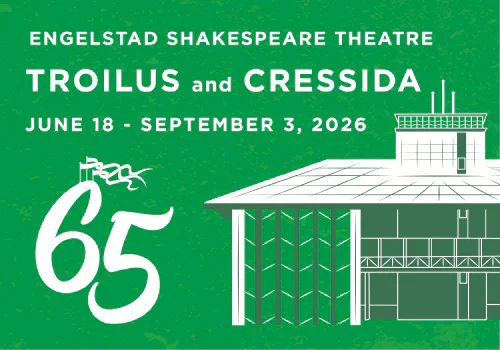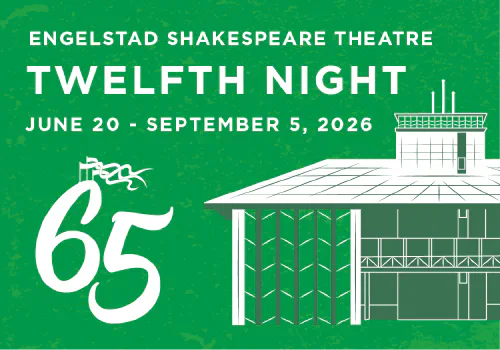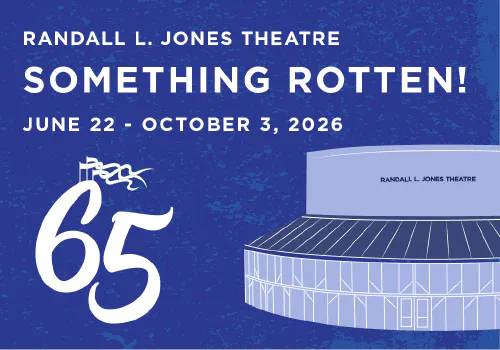By Ace G. Pilkington
What exactly is The War of the Roses about? The short answer is that it’s about the struggle between the House of Lancaster and the House of York for the throne of England. The House of Lancaster, in the person of Henry IV, usurped the throne from Richard II. Things went fairly well for Henry IV, who gained land for England; even better for Henry V, who added most of France; and unbelievably badly for Henry VI, who lost both kingdoms and his life. Henry VI combined in one person most of the problems that monarchies can have. He came to the throne at the age of nine months (admittedly through no fault of his own), and the usual struggle for power among royal relatives ensued. Worse still, when Henry VI grew up, he alternated between saintliness and insanity, two mental states which render a ruler equally unfit to rule.
Shakespeare’s three parts of Henry VI (combined into the Utah Shakespeare Festival’s The War of the Roses) cover a period of time from 1422 to 1471, from the death of Henry V to the death of Henry VI. It is a period that has not been popular with historians partly because of its confusion of motivations and personalities. Even the extent and impact of the conflict is debatable. For instance, “battles were fought in only eight of the thirty-nine counties of England,” and if the active period of conflict of the Wars of the Roses is judged to be from 1455 to 1485, “campaigning took place during only fifteen months throughout these thirty years” (Jasper Ridley, The History of England [New York: Dorset Press, 1981], 119 120). The soldiers who took part in these campaigns were not drawn from the entire population as the old feudal levies had been, but were instead small bands of mercenaries in the service of the great magnates. Still, these limited conflicts with small armies made great changes. “Twenty-six of the sixty-four English peerages became extinct during the Wars of the Roses" (Ridley 120).
Winston Churchill called it “the most ferocious and implacable quarrel of which there is factual record,” and said: “Only Shakespeare, basing himself largely upon Hall’s Chronicle, has portrayed its savage yet heroic lineaments. He does not attempt to draw conclusions, and for dramatic purposes telescopes events and campaigns” (The Birth of Britain [New York: Dodd, Mead and Company, 1956], 442). What exactly is Shakespeare up to in these plays and how should audiences approach the material? Shakespeare’s history can be so precise that it seems very near the shape of truth, as in Richard II, or it can be so perverse that it seems compounded of errors, as in Macbeth. His version of the Wars of the Roses is somewhere between these extremes. In the words of John Julius Norwich, Shakespeare is “attempting something different and a good deal more ambitious” than the story of one major figure. “His aim in these . . . plays is to portray not just the character of a King but a vast sweep of history” (Shakespeare’s Kings [London: Viking, 1999], 236).
Perhaps there is no more useful advice for audience members about to experience the shocks and shrieks, the hurts and heroisms, the hatreds and healings of The War of the Roses than to say: What you are about to see is a great and enthralling tapestry, shot through with all the colors and terrors of the middle ages but woven with the skills and delicacies of the Renaissance by the most incomparable artist even that brilliant time ever produced. Do not lose yourself in the myriad small details, curious and entrancing as those miniature portraits are, but instead look at the immense pageant of people as it streams by. Don’t worry about losing this character or that one. From the blur of truths and inaccuracies, of large and small actors on this bloody stage will come the very shape and breath of history. And once you have caught the sweep of it, you will also begin to pick out those specially memorable pictures, those people who rise from the mists of history into fame.
Among the most striking of such famous pictures is Henry VI, gentle and overgenerous, merciful and foolish. “His piety knew no bounds, and was, with hunting and a taste for literature, the stay and comfort of his long, ignominious, and terrifying pilgrimage” (Churchill 413). It was perhaps the loss of his French crown that drove him mad so that “his body gaped and drivelled over the bristling realm” (Churchill 438). Henry’s wife, Margaret, was mother and murderer, heroine and villainess. John Julius Norwich says she was “famous for her beauty and intelligence” but adds that calling her “the she-wolf of France . . . would have been an understatement” (230-31). Henry’s chief opponent, Edward IV, was young, handsome, charming to and easily charmed by women. His marriage to Elizabeth Woodville tumbled him for a time from the throne where he had settled so comfortably. Churchill says of him, “In all his reign he never fought but when he was forced; then he was magnificent” (458).
Here, too, are the kingmakers, Warwick and Joan of Arc, strange figures who, in their different ways, shape others into power, only to be discredited and discarded when the shaping is done. And here are the would-be and soon-to-be kings, the most sinister among them that Richard, standing now in his brother Edward’s shapely shadow, who will put on royalty and treachery as Richard III. The most innocent may have been the father of both Richard and Edward, Richard, duke of York. “If only Henry could rule and rule well, he would have been content” (Robin Neillands, The Wars of the Roses [London: Cassell, 1992], 83).
Finally, here are the lands themselves—risen almost to personalities in this intense world. France is “a desert, horrible to see. The fields were untilled; the villages were clusters of ruined hovels. Amid the ruins, the weeds and brushwood . . . of what were formerly cultivated and fertile fields there dwelt a race of peasants reduced to the conditions and roused to the ferocity of wolves” (Churchill 451). England is country and character, battleground and burial ground, reason for fighting and reward for victory. How all of the threads of this great tapestry glitter!










